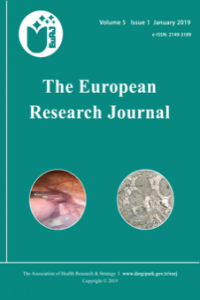A virtual pathway reduced the need for physical review in patients with a suspected scaphoid fracture
Abstract
Objectives: Suspected scaphoid fractures
are a common reason for referral from the emergency department to fracture
clinics. Few patients actually have a fracture. Cross sectional imaging has the
potential to improve early diagnosis and reduce unneccessary immobilisation.
The aim of this audit was to investigate the effectiveness of a virtual
pathway, incorporating early magnetic resonance imaging (MRI) scan, for
suspected scaphoid fractures. The secondary aim was to investigate whether the
accuracy of other clinical signs, such as anatomical snuffbox pain on wrist
ulnar deviation, was sufficient to reduce the number of patients requiring a
MRI scan.
Methods: A prospective audit was
undertaken of 123 patients in an emergency department and associated minor
injuries unit. These patients were managed with an early MRI scan. Where no
significant injury was found, they were discharged after a phone call from a
virtual fracture clinic nurse.
Results: There were 16 (13%)
true scaphoid fractures. MRI scanning showed other injuries including significant
soft tissue injuries (13%), other carpal fractures (17%) and fractures of the
distal radius (19.5%). The number of clinical appointments required was 0.42
per patient. Eighty patients did not have any face-to-face review. Other
clinical examination techniques, such as anatomical snuff box pain on ulnar
deviation of the wrist were not sufficiently sensitive or specific to reduce
the need for MRI scanning or review.
Conclusions: A virtual fracture
clinic pathway and early MRI scanning reduced face-to-face reviews and
unneccesary immobilisation. Clinical examination techniques are not
sufficiently sensitive to reduce the need for scanning.
Keywords
References
- [1] Duckworth AD, Jenkins PJ, Aitken SA, Clement ND, Court-Brown CM, McQueen MM. Scaphoid fracture epidemiology. J Trauma Acute Care Surg 2012;72:E41-5.
- [2] Unay K, Gokcen B, Ozkan K, Poyanli O, Eceviz E. Examination tests predictive of bone injury in patients with clinically suspected occult scaphoid fracture. Injury 2009;40:1265-8.
- [3] Harrison W, Newton AW, Cheung G. The litigation cost of negligent scaphoid fracture management. Eur J Emerg Med 2015;22:142-3.
- [4] Ring J, Talbot C, Price J, Dunkow P. Wrist and scaphoid fractures: a 17-year review of NHSLA litigation data. Injury 2015;46:682-6.
- [5] Duckworth AD, Buijze GA, Moran M, Gray A, Court-Brown CM, Ring D, et al. Predictors of fracture following suspected injury to the scaphoid. J Bone Joint Surg Br 2012;94:961-8.
- [6] Bergh TH, Lindau T, Soldal LA, Bernardshaw SV, Behzadi M, Steen K, et al. Clinical scaphoid score (CSS) to identify scaphoid fracture with MRI in patients with normal x-ray after a wrist trauma. Emerg Med J 2014;31:659-64.
- [7] Rhemrev SJ, Beeres FJP, van Leerdam RH, Hogervorst M, Ring D. Clinical prediction rule for suspected scaphoid fractures: a prospective cohort study. Injury 2010;41:1026-30.
- [8] Yin Z-G, Zhang J-B, Gong K-T. Cost-effectiveness of diagnostic strategies for suspected scaphoid fractures. J Orthop Trauma 2015;29:e245-52.
- [9] Karl JW, Swart E, Strauch RJ. Diagnosis of occult scaphoid fractures: a cost-effectiveness analysis. J Bone Joint Surg Am 2015;97:1860-8.
- [10] Duckworth AD, Ring D, McQueen MM. Assessment of the suspected fracture of the scaphoid. J Bone Joint Surg Br 2011;93:713-9.
- [11] Kelson T, Davidson R, Baker T. Early MRI versus conventional management in the detection of occult scaphoid fractures: what does it really cost? A rural pilot study. J Med Radiat Sci 2016;63:9-16.
Abstract
References
- [1] Duckworth AD, Jenkins PJ, Aitken SA, Clement ND, Court-Brown CM, McQueen MM. Scaphoid fracture epidemiology. J Trauma Acute Care Surg 2012;72:E41-5.
- [2] Unay K, Gokcen B, Ozkan K, Poyanli O, Eceviz E. Examination tests predictive of bone injury in patients with clinically suspected occult scaphoid fracture. Injury 2009;40:1265-8.
- [3] Harrison W, Newton AW, Cheung G. The litigation cost of negligent scaphoid fracture management. Eur J Emerg Med 2015;22:142-3.
- [4] Ring J, Talbot C, Price J, Dunkow P. Wrist and scaphoid fractures: a 17-year review of NHSLA litigation data. Injury 2015;46:682-6.
- [5] Duckworth AD, Buijze GA, Moran M, Gray A, Court-Brown CM, Ring D, et al. Predictors of fracture following suspected injury to the scaphoid. J Bone Joint Surg Br 2012;94:961-8.
- [6] Bergh TH, Lindau T, Soldal LA, Bernardshaw SV, Behzadi M, Steen K, et al. Clinical scaphoid score (CSS) to identify scaphoid fracture with MRI in patients with normal x-ray after a wrist trauma. Emerg Med J 2014;31:659-64.
- [7] Rhemrev SJ, Beeres FJP, van Leerdam RH, Hogervorst M, Ring D. Clinical prediction rule for suspected scaphoid fractures: a prospective cohort study. Injury 2010;41:1026-30.
- [8] Yin Z-G, Zhang J-B, Gong K-T. Cost-effectiveness of diagnostic strategies for suspected scaphoid fractures. J Orthop Trauma 2015;29:e245-52.
- [9] Karl JW, Swart E, Strauch RJ. Diagnosis of occult scaphoid fractures: a cost-effectiveness analysis. J Bone Joint Surg Am 2015;97:1860-8.
- [10] Duckworth AD, Ring D, McQueen MM. Assessment of the suspected fracture of the scaphoid. J Bone Joint Surg Br 2011;93:713-9.
- [11] Kelson T, Davidson R, Baker T. Early MRI versus conventional management in the detection of occult scaphoid fractures: what does it really cost? A rural pilot study. J Med Radiat Sci 2016;63:9-16.
Details
| Primary Language | English |
|---|---|
| Subjects | Health Care Administration |
| Journal Section | Original Articles |
| Authors | |
| Publication Date | January 4, 2019 |
| Submission Date | March 31, 2018 |
| Acceptance Date | June 8, 2018 |
| Published in Issue | Year 2019 Volume: 5 Issue: 1 |
Cited By
Evaluating the potential for cone beam CT to improve the suspected scaphoid fracture pathway: InSPECTED: A single-centre feasibility study
Journal of Medical Imaging and Radiation Sciences
https://doi.org/10.1016/j.jmir.2021.10.002



